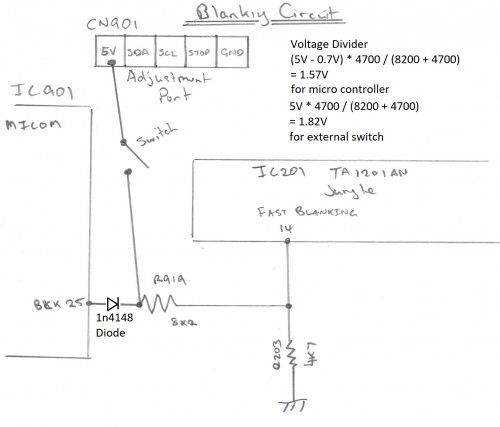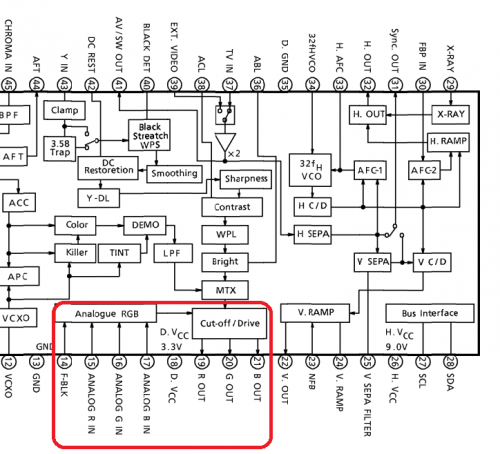TV Model: Samsung TXD-1372
Chassis: K-1
Service Manual Link
Jungle chip is TA1201AN. Datasheet Link
8 Bit Guy Video 1 Video 2
After analysis of the schematics, the On Screen Display Circuit for this TV could be simplified to this.
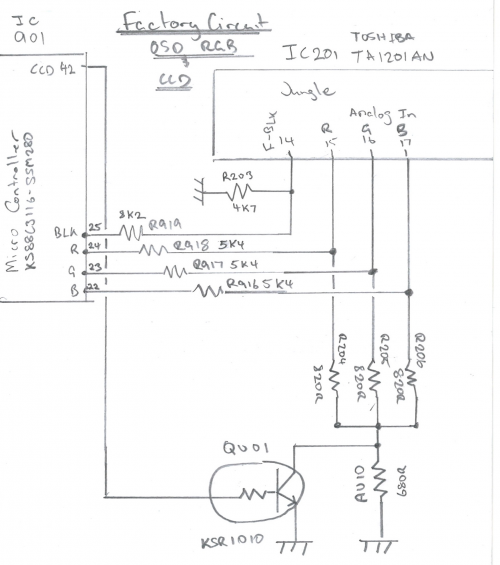
This set was unusual, it has some extra circuitry for what I believe is for Close Caption Display. I might add a later post with more detail about it but, long story short, it appears that it was designed to be disabled in some versions of this set (the board and schematic show an optional jumper) so I decided we should bypass it with addition of the jumper JWJ06.
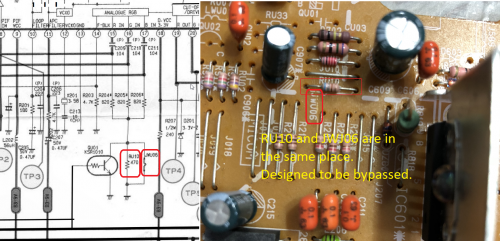

The resultant On Screen Display circuit now becomes the standard pattern used by many sets. Micro controller RGB out through a voltage divider in into Jungle RGB inputs.
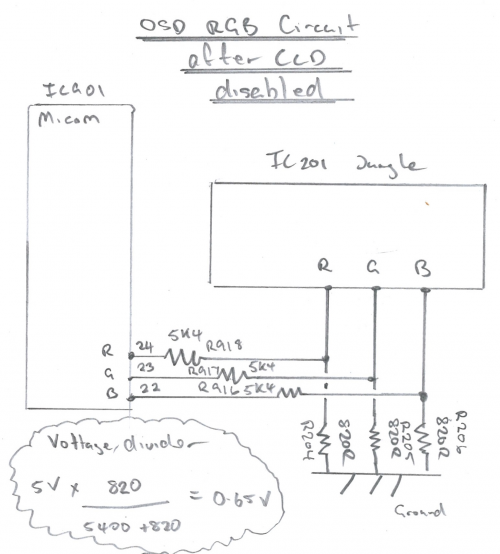
Now that we've got the standard circuit in place we want to implement the RGB Mixing. This is the method pioneered by Syntax and myself to avoid the dreaded OSD snip methods that had been previously used. In this method we mix the external RGB we input with the On Screen Display. Whilst the On Screen Display isn't perfect in RGB mode it is usable and saves a lot of wiring and flicking of switches. On TVs like this one with through hole resistors it is WAY easier to implement than OSD snip, just needs a little maths.
Here is the diagram that serves as template for the OSD/RGB Mix. This is from the test set Syntax first tested the method on..
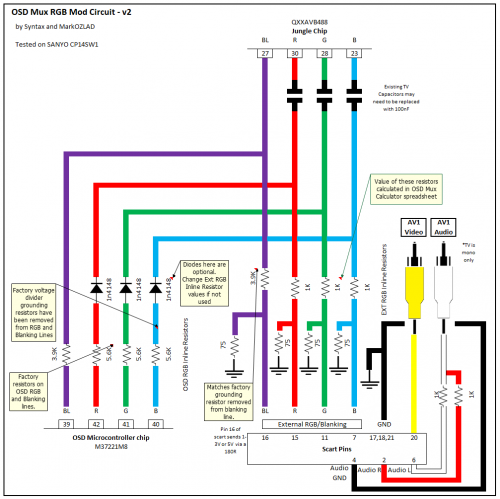
The spreadsheet used to calculate resistor values is here
Another piece of background knowledge required is that the External RGB video signals must be 75 Ohm terminated. Turns out the mathematics works out so that the existing resistors were suitable and we could implement the external RGB input like this.

In video 1 you will see David making his "little triangles" out of the existing resistors and 75 ohm resistors and then connecting his RGB wires there.
Ok, let's discuss blanking....
My original circuit design, which turns out worked but was flawed was this.

We grab 5V from the unused CN901 port and connect it to the leg of resistor R919. This means the TV's inbuilt voltage divider will reduce the 5V to the 1.5V or so used to induce RGB blanking. Fortunately David implemented this slightly differently at first and instead of soldering the 5V line to the resistor, he soldered to the chip leg of the jungle. This is identical in function but it triggered numerous viewers to note a flaw with this method that was potentially dangerous. He discusses this in the second video and David came up with a solution of instead running the Micro controller's blanking signal and our 5V to the opposite sides of the switch. This enables us to prevent 5V going to the micom and also allows OSD to continue to work in RGB and not RGB modes.
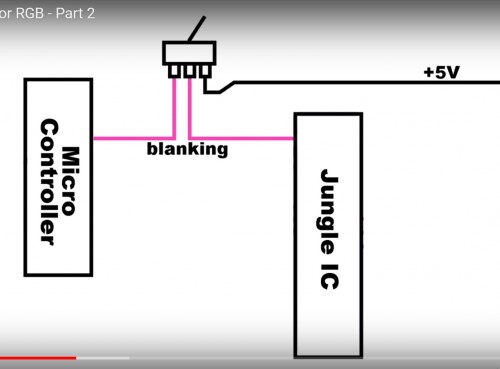
The output of the switch goes to the lifted leg of R919, the leg closest to micro controller. The micro controller's blanking signal comes from the hole left by the lifted leg.
I really like this solution and will be copying it myself.
I'm very glad David implemented it the way he did in the first place otherwise it may not have been so obvious to the viewers that was an issue. Thanks to those who commented/emailed.
That's the thrust of the mod, some other quick things...
A lot of commentators talked about the AV port being Scart shaped. This TV does not have an empty header for RGB scart, it only has the pins for composite video and mono audio.
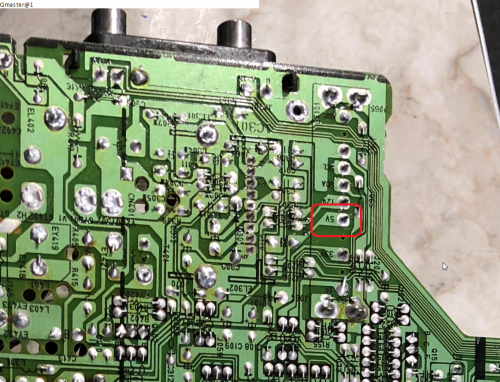
CN901 is a port used to adjust values in the EEPROM. A lot of sets have these ports and are a great place to find 5V and Ground.
Users also suggested a diode could be inserted on the blanking line from the micro controller, before R919 and then connect the constant 5V to R919. I have taken the time to review the maths on this. It appears it WOULD be suitable to place a 1n4148 switching diode on the line. The 0.7 Volt drop caused by the diode would change the blanking voltage the jungle receives from the micro controller but it would still be within the required range to trigger RGB insertion. By my maths it would end up (5.0 - 0.7) * 4700 / (8200 + 4700) = 1.57 Volts.
